Very inspiring work and a great article!


April 22nd is the 40th anniversary of Earth Day, an occasion for people to celebrate the world we live in. Amidst a warming globe, the disappearing of animal species and the destruction of the world’s forests, environmentalist Willie Smits reminds us of the daily destruction humans cause to their planet but also offers the hope that we can reverse the tide.
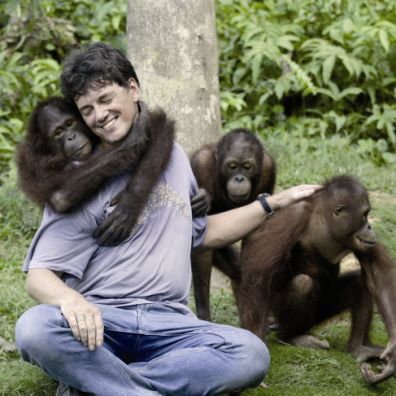 Dutch-born Willie Smits (pictured) has lived and worked In Indonesia for over 30 years, trying to save some of the earth’s most precious resources. Probably best known for his work to preserve the orangutans, he is also a microbiologist, a geneticist, a tropical soil and plant diseases expert, a lecturer in mathematics, an ecologist, and even a genealogist.
Dutch-born Willie Smits (pictured) has lived and worked In Indonesia for over 30 years, trying to save some of the earth’s most precious resources. Probably best known for his work to preserve the orangutans, he is also a microbiologist, a geneticist, a tropical soil and plant diseases expert, a lecturer in mathematics, an ecologist, and even a genealogist.
His work began when he came to Indonesia to work on growing tropical hardwood trees and the generation of tropical rainforests. It has led him to look into the reversal of disappearing rainforests in South East Asia, which have been the victim of oil palm plantations and logging, and the preservation of wildlife such as the orangutan – which he calls the thinkers of the jungle.
“I call them beings, when you look into the eyes of the orangutans there comes this moment when you get goosebumps, when you realise you are looking into the eyes of a person. The orangutans have a personality and you can read their history in their eyes,” he says.
Saving Uce
In 1989 Smits’ life took an unexpected turn when he came across a baby orangutan in a market in Borneo’s Kalimantan. Wanting to send the baby, which he named Uce or ‘come to love’, to a rehabilitation centre, he was disappointed to find that Indonesia’s facilities were more about money and tourism than the preservation of species, often adapting techniques which endangered already existing tribes with diseases and upset their delicately balanced habitat. Looking into the literature on the matter he realised that even though the knowledge was out there to save the orangutans, action wasn’t being taken.
“That is when I decided I should try to do this myself and that is when I gave a new direction in my life that brought me into nature preservation, law enforcement, the monitoring of forests with radar technology, setting up databases for monitoring political decisions and so on, and that set me off to save the orangutans and brought me into contact with the real issues,” he says.
Endangered species
There are many problems that face orangutans: loss of habitat or fragmentation of habitat, where remnant patches of forest become too small for them to live off; and the young orangutans still face the threat of hunting – to be used in the circus, for traditional medicine, or for their meat or skulls.
Another problem is climate change, which has disturbed the seasons in the rainforest and so also the reproductive cycle of the orangutans. It is a whole complex of problems they are facing and ones Smits was determined to tackle. Together with Borneo Orangutan Survival and Orangutan Outreach, two organisations he founded, he set out to protect the forests in order to protect the orangutans.
Originally, Dr. Smits researched orangutans, focusing on their diets and forest conditions by setting up a monitoring system using radar and GIS. But enabling orangutans to live freely without harm “was a constant fight” he says, with illegal logging rife and justice hard to come by due to corruption and a local community dependent on these illegal practices.
This is when he realised that the fate of the orangutans depended on the preservation and regeneration of forests, which in turn meant helping local people find alternative ways of making a living which did not depend on the harvesting of forests. “The only way to protect a forest is to get the local people involved, and the only way to do that is by giving them a deal that they are interested in,” he says.
With this in mind he founded the Masarang Foundation, which raises money and awareness to restore habitat forests around the world and to empower local people.
It is the vehicle through which he now runs a host of environmental and developmental projects to try “to outcompete destructive land uses.”
Palm bride
Smits’ wife is a local tribal queen and his marriage to her led him into what could be the most powerful solution to South East Asia’s forestry problems yet.
“When I needed to pay my bride a dowry of 6 palm trees I thought: how is this possible, so cheap?. But then I realised six palm trees are enough to keep a family alive”, he says.
His research into the highly productive tree led him to set up a mini palm sugar factory in 2007 to produce sugar, which uses unique methods to extract energy from sustainable resources, rather than wood. The project is hugely succesful, generating up to 20 times as many job opportunities as conventional sugar cane or palm oil farms, and at better pay, while maintaining a mixed forest. This in turn saves rainforests and the culture of their people, a system that has the potential to completely overhaul Borneo’s land usage and has landed him the Ashoka Award in 2009, an accolade given to commend social entrepreneurs finding solutions to the world’s problems.
“I want to give the local people a fair deal so they stick to it,” he says, “going for a fair profit and still making this world a better place.”
Mapping the palm sugar communities
A jack of all trades, Smits’ work has led him down other unexpected paths: back when he started working with sugar palms, he noticed the palm sugar tappers were very healthy with many climbing up to trees every day at the age of 80. Smits wanted to know how much healthier the palm sugar farmers were and whether it was their lifestyle or something else that kept them h ealthy.
ealthy.
He ran analyses on a thousand people and noticed that palm sugar farmers lived on average 11 years longer than people who ate white sugar and that diabetes and heart diseases were non-existent in these communities. These diseases being hereditary, he now hopes to find whether there is a genetic contribution to lower or higher diabetes and to find out what the contribution of palm sugar is in this scenario and has decided to use the MyHeritage Family Tree Builder as a research tool.
“Using the MyHeritage genealogy database to combine people’s trees, I will run the analysis. The database will be used to analyze genetic contribution to lower or higher diabetes and to find out what the contribution of palm sugar is. In June of this year 6000 people and their trees will be plotted,” he says.
The library of the Masarang foundation has even translated Family Tree Builder into Indonesian so the people can come in and use it to map their family trees.
Hope for the future
So far Smits has saved thousands of acres of wildlife and thousands of orangutans but that fact is wrought with sadness. “I care for more orangutans than all the zoos in the world because we’re so bad at protecting them in the wild,” says Smits.
But there is hope: Uce is about to have her third baby in the wild, a first in the world. Her second baby was conceived by the second orangutan Smits released into the wild Dodoi. “It is almost like a fairy tale,” he says.
“I cannot say I am positive, but I do know we still have a chance. As long as there is a chance, there is still hope; as long as there is hope, we should continue whatever we can”.
MyHeritage will be donating the proceeds of its Earth Day Special campaign to Dr Smits’ foundations.



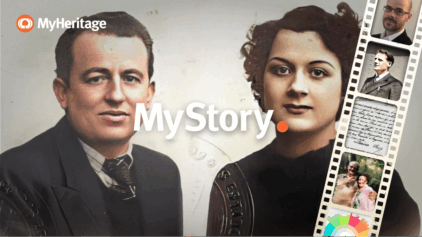
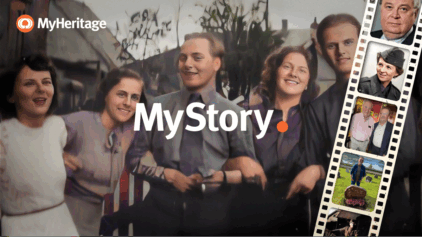

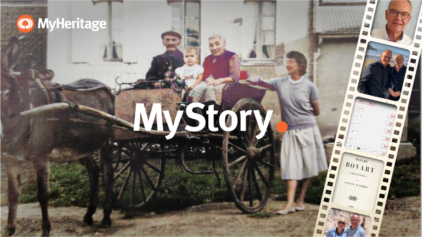




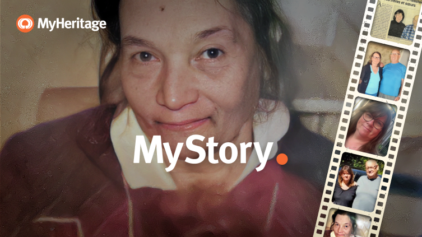
Gilad
April 28, 2010
What a great, inspiring man. It is an honor for me to have met Dr. Smits in person.
Gilad, founder of MyHeritage.com